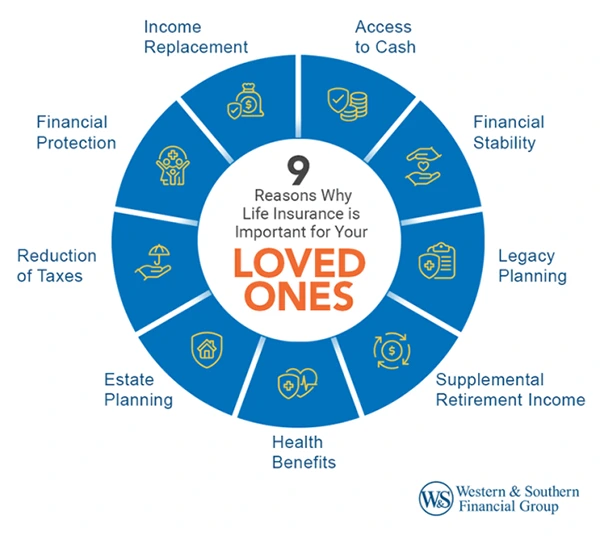KEY TAKEAWAYS
- AI creates personalized policies by analyzing lifestyle, health, and behavioral data.
- Big Data improves underwriting accuracy, fairness, and speeds up decision-making.
- Blockchain ensures transparency, prevents fraud, and automates instant claims settlements.
- Digital platforms provide seamless self-service with apps, chatbots, and virtual advisors.
Life insurance is something everyone needs. Nobody knows when a tragedy might occur and you lose your life. It can put financial strain on your family, but with life insurance, they will have something to rely on. This year, the global market might even reach US$3.61 trillion.
There are things like paid up life insurance where every premium has been covered, but you can still get the benefits. But, this is a new era where technology plays a crucial role, so did that affect this sector in any way?
Well, in this article, I’ll mention how technology is revolutionizing the life insurance industry in 2025.
AI is drastically transforming risk assessment in life insurance by analyzing a volume of data with greater accuracy than its predecessors. But, before anything, you should have life insurance, and you can see in the infographic below.

Instead of judging based on only age, occupation, or medical history, AI algorithms assess other lifestyle patterns and health records, and behavioral data. This provides the insurer with detailed info to create policies at a very granular level based on an individual, which means fairer premiums.
Customers are benefitting from faster approvals, paperless applications, and actual policies reflective of their degree of risk. These days, AI is doing more than just improving the accuracy; it is also gaining clients’ trust.
Underwriting for life insurance has always relied on information that has later been converted into data, but now, the quality and quantity of information available to underwriters has never been so comprehensive.
This improves accuracy while making decisions equitable through the elimination of guesswork. Insurers can now identify risk through greater accuracy and understanding of patterns, metrics, and propensity to commit fraud, to the benefit of the customer and business.
Now applicants can expect faster, fairer evaluations and time to underwrite their application. Big Data is not just changing the improvements in underwriting, but it is making the actuarial science of underwriting faster, clearer, and more achievable for the customer.
Improving trust in life insurance can be accomplished with the use of blockchain technology to provide transparency and generate proof against fraudulent activity. Each policy, each claim, and each transaction in the blockchain is recorded on an immutable ledger that is secured by cryptography.
This means that it will become more and more possible to believe that fraudulent activity cannot occur because an owner or policy change cannot be changed in its transaction history. The result is reduced complexity and cost to insurers, and clients can trust that their policy was not altered or changed fraudulently.
In addition, the security of smart contracts adds additional simplicity to the claim’s settlement process so that a claim payout can occur on the spot when the conditions in a contract have been met.
The rise of digitalization within life insurance has enhanced customer engagement and convenience more than ever. Clients are able to apply, pay their premiums, track a claim, and interact with support all via one app/web platform, allowing them to complete everything in one location.
AI chatbots are available to support customers 24/7 and can respond instantly, with absolutely no human interaction. Virtual advisors can also provide advice on a difficult insurance decision.
This style of agency gives customers higher power/similar dependence on agents or less process, in 2025, assurance companies with advanced digital self-service options will have better customer loyalty, because the seamless, easy experience is becoming a competition factor or driver in addition to rates.
Wearables and Internet of Things (IoT) technologies are moving life insurance from a reactive to a preventive state. Smartwatches, fitness trackers, and health monitoring applications are continuously collecting information about your heart rate, sleep history, activity levels, and other vital signs.
The insurers take this real-time information and reward people with lower premiums and other incentives for healthier activities. Instead of only focusing on insurance claims after something has gone wrong, insurers are promoting wellness, and the insured’s long-term risk is reduced for both the insured and the insurer.
The insured lives a healthier lifestyle, obtains savings over time, and the insurer has reduced payout liabilities. Wearables and IoT will be at the forefront of creating proactive, health-based insurance ecosystems worldwide.
In this era of technology, the life insurance industry doesn’t have to rely on traditional methods anymore, and it can achieve better results without strict regulations.
Technology, artificial intelligence, big data, blockchain, digital platforms, and wearable technology provide the ability for insurers to move toward personalized, transparent, and preventive options.
Customers enjoy fairer premiums, faster claims, and enhanced convenience, while insurers mitigate risk and build trust. The digital transformation of the life insurance industry is a critical component of modernization.
AI is using more widespread lifestyle and health data to help insurers develop policies tailored to insured individuals, and give those individuals more fair premiums and speedier approval.
Blockchain offers immutable, transparent records that can decrease fraudulent activity, engender trust, and allow an insurer to use smart contracts to settle claims quickly, securely, and automatically.
Wearables collect real-time health data and actively promote wellness. Customers get to enjoy lower premiums, while insurers can avoid paid claims by minimizing long-term health risks.
